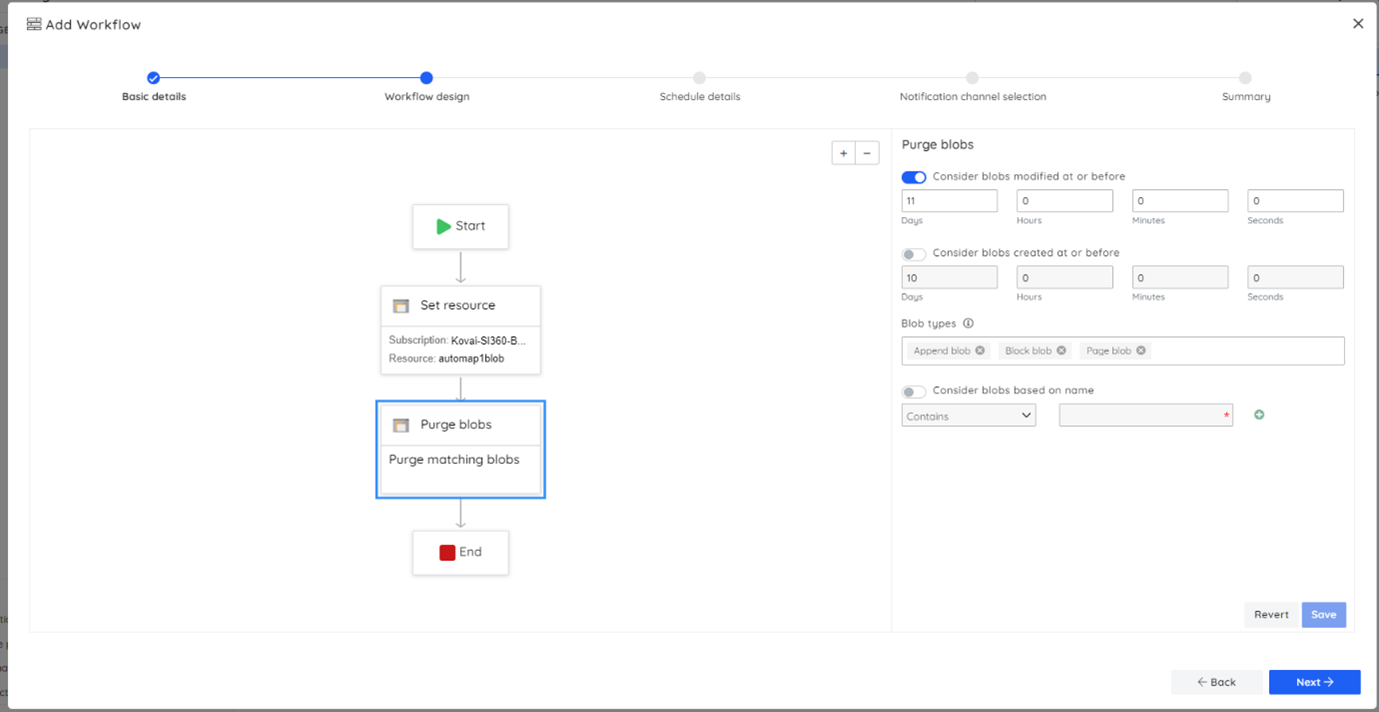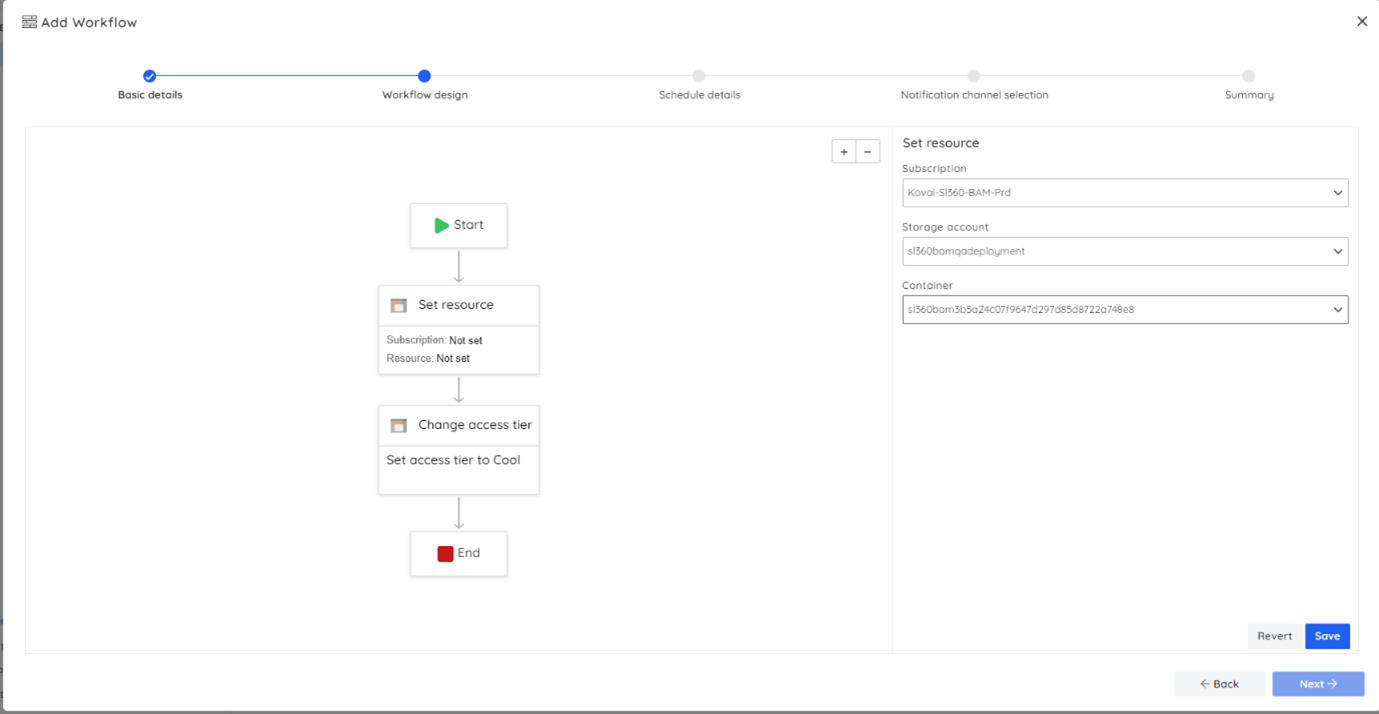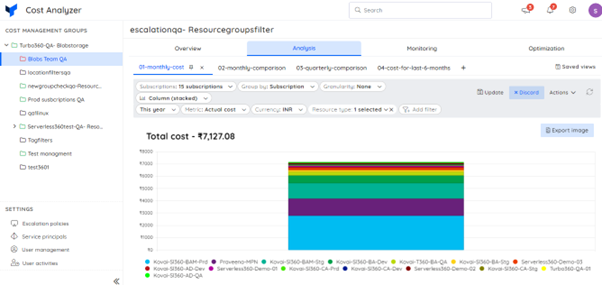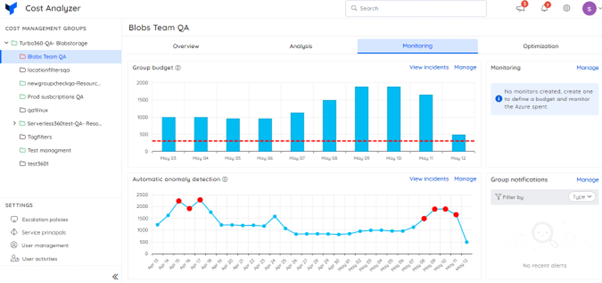Azure blob storage has become one of the prevalent storage services being used by organizations to store unstructured data.
As the usage of blob storage increases, the associated cost will quickly accumulate and impact the Azure budgets significantly.
To substantiate the above statement, from Virtana’s state of hybrid cloud storage report, we could observe that 94% of the cloud decision makers agree that the storage cost is increasing and among which 54% said that their storage cost is growing faster than the other services like compute and workflow orchestration.
Hence a good approach to managing these costs is important which leads to the need for blob storage cost optimization strategies.
In this blog, we will dive into the strategies available to immediately optimize cost of Azure blob storage.
Key terminologies to understand
Before getting into strategies for optimization, it’s crucial to understand key terms relevant to Azure Blob Storage:
- Azure Blob Storage: This cloud-based object storage solution is designed specifically for storing vast amounts of unstructured data.
- Storage Tiers: Azure Blob Storage offers various tiers with different performance levels and pricing structures. These tiers include hot, cool, and archive, catering to diverse storage needs.
- Lifecycle Policies: These are regulations implemented to automate the management of blob data. Lifecycle policies can be configured to change tiers or delete completely based on parameters like data age and access frequency.
Azure Blob cost optimization strategies
Modifying blob to the right storage tiers
Azure Blob Storage has three tiers tailored to different data access needs. You can save cost by organizing your data across these tiers based on how often it’s used while still meeting performance needs.
- Hot tier – Use this tier when you need quick and frequent access to your data. It’s a bit more expensive but keeps essential information available whenever needed.
- Cool tier – The cool tier is great for data you don’t access often. It balances cost and access speed well, providing a cost-effective option for less frequently used data. Think about moving data you don’t use much to the Cool Tier. It helps you save on storage costs without sacrificing too much on access speed. This works exceptionally well for data you hardly touch but might need now and then.
- Archive Tier – The Archive Tier is perfect for data you hardly ever need to access. It’s the most budget-friendly storage option, but keep in mind there are extra charges for retrieving data, which might also take longer to access.
This tier works well for storing data you rarely want, especially if you’re storing it for archival or compliance purposes and don’t need instant access.
By analyzing how often your data is accessed, you can make informed decisions about which tier to store it in, optimizing your costs accordingly.
Managing data lifecycle automatically
Lifecycle policies are like your personal assistants for data management, working automatically based on your defined rules.
With these policies, you can set guidelines for moving data between storage tiers or deleting it when it’s no longer necessary.
For instance, let’s say you have data that’s frequently accessed at first but gradually becomes less important. You could create a policy to shift it from the hot to the cool tier after 30 days of inactivity. After another 90 days without access, it could be moved to the archive tier for long-term storage, all without manual intervention. This way, you optimize costs by keeping data in the most cost-effective tier based on usage.
Delete unused blobs for long time
Another scenario could involve temporary data or logs that are only needed for a short period. In this case, you might establish a policy to delete these blobs automatically after 60 days. This not only frees up storage space but also helps cut down on expenses.
Utilize Reservation capacity for blob storage
Azure Storage Reserved Capacity presents a valuable opportunity for cost optimization. This feature provides discounted rates on capacity for Block Blobs and Azure Data Lake Storage Gen2 data within standard storage accounts when you commit for one year or three years.
By committing to a reservation, you secure a fixed amount of storage capacity for the duration of the reservation term. This commitment leads to potential savings on storage expenses, offering a cost-effective solution for managing your storage needs.
Optimize your data transfers
Last but not least, fine-tuning your data transfers can be a significant money-saver when it comes to Azure Blob Storage. By minimizing the volume of data you transfer, you simultaneously decrease your data transfer expenses. Additionally, leveraging Azure Blob Storage’s data transfer tools like Azure Data Box or Azure File Sync can further streamline and optimize your data transfers, contributing to cost savings.
How does Turbo360 helps to optimize blob storage cost?
In this section, we will look into the various capabilities of how Turbo360 – An advanced cost management platform helps to reduce Azure blob cost.
Workflow automation to change the access tier of blobs
Blob storage can be a smart choice, especially if you’re mindful of costs. Instead of keeping all your data in the pricier Hot tier, you can reserve that space for the stuff you use or change often. Less frequently accessed data can reside in the Cool tier, saving you some cost.
Then there’s the archive tier, which is perfect for data you’re just holding onto for backup. It’s cheaper but sorting out which data goes where manually is not a thrilling task. That’s where Turbo360 swoops in, offering automated help to shuffle those least-accessed blobs into the correct tiers.
Below image shows how you can easily set up an workflow to change access tiers with desired conditions.

Workflow automation to delete blobs based on created and modified date
With Turbo360’s automated features, you can optimize Azure storage costs effortlessly. By setting up parameters to remove blobs created or modified before a specific date, you can swiftly eliminate unnecessary and outdated blobs with just a single click.
In addition to Blob, our platform extends this capability to files as well. It detects the unassessed files for the desired period and deletes them to save cost.

Analyse blob storage cost in business context
Turbo360 helps you visualize the blob storage cost in a dedicated tree hierarchy view, and it pulls in cost data across subscriptions and tenants. This flexibility allows you to gather the cost data across boundaries and visualize it in a way that makes sense to your business.
For instance, if a dedicated storage team is responsible for storage costs, you can create a dedicated tree view and visualize the cost.

On the other hand, if you want to understand how much a specific product or feature consumes the storage cost, you can also set up a separate view.
Proactively detect anomalies in the blob storage cost
After configuring your preferred cost settings in the tree view, you can head over to the monitoring section. Here, you’ll find an option to spot any irregularities in your blob storage expenses. The platform will alert you on anomalies if there’s a spike or dip in costs compared to your usual spending patterns.

Conclusion
Managing Azure Blob Storage costs efficiently is paramount for organizations as the usage of blob storage continues to rise. As highlighted, a significant portion of Azure budgets can be allocated to blob storage, emphasizing the importance of implementing cost optimization strategies.
By understanding key terminologies like storage tiers, lifecycle policies, and leveraging features such as reservation capacity, organizations can make informed decisions to optimize costs while meeting their storage needs effectively.
Additionally, Turbo360 emerges as a valuable tool in this endeavour, offering workflow automation capabilities to streamline tasks such as tier management and blob deletion. Its ability to analyse costs in a team context and proactively detect anomalies further enhances cost optimization efforts. Get 15-day free trial today to discover the potential opportunities for Azure blob storage cost optimization.
FAQs
1. What is the best way to optimize Azure Blob Storage costs?
Start by moving data into the right storage tier, setting lifecycle rules, deleting unused blobs, and using reservation capacity. If you want faster results with less manual effort, Turbo360 can automate tier changes, cleanup rules, and cost analysis so you instantly reduce Blob Storage costs.
2. How can I automatically move Azure blobs to cheaper tiers?
You can use Azure lifecycle policies, but they require careful rule setup. Turbo360 makes this easier by automating tier changes based on access patterns, age, or custom conditions. This ensures your hot, cool, and archive data stays in the correct tier at all times.
3. What tool can help me identify and delete old or unused blobs?
Turbo360 provides automated workflows that detect blobs that have not been used or modified for a long time and removes them safely. It also supports file cleanup, making it easier to eliminate waste and cut Blob Storage costs across subscriptions and tenants.
4. How do I track and analyse Azure Blob Storage costs across teams or products?
Azure Cost Management gives basic visibility, but it does not show costs in a business context. Turbo360 lets you group Blob Storage costs by team, product, feature, or subscription, helping you understand who is driving storage spend and where optimization opportunities exist.










